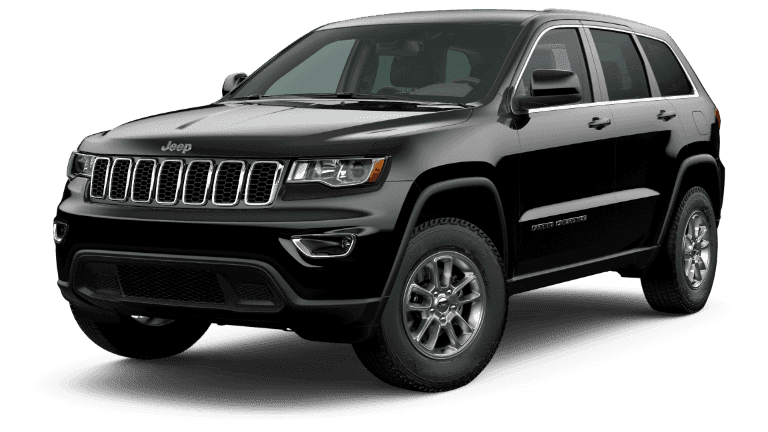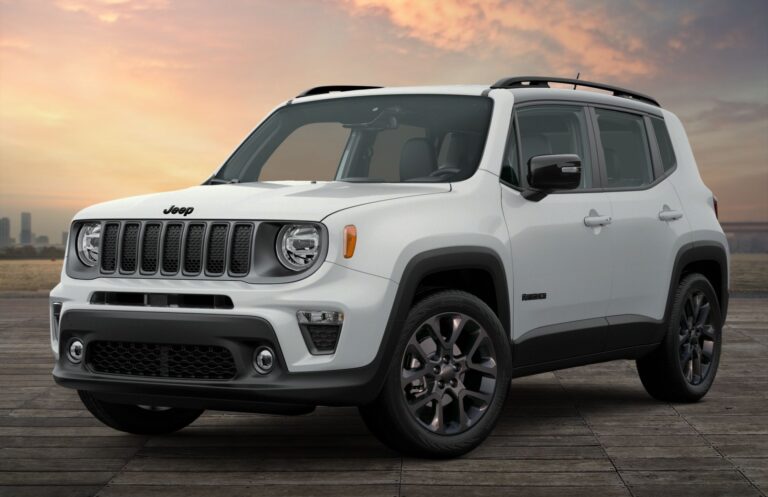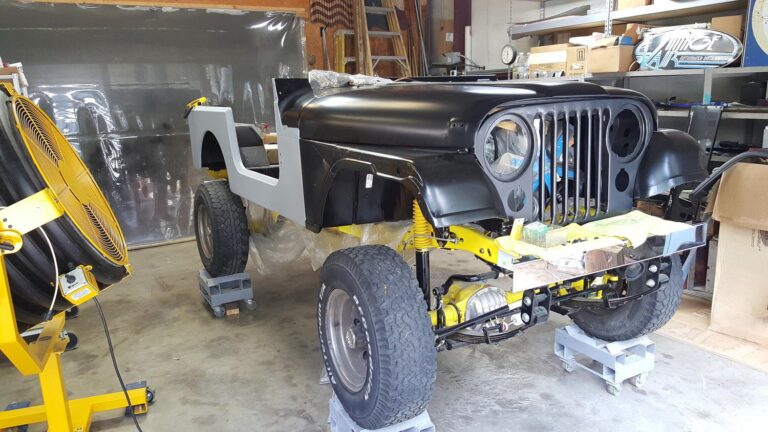1955 Jeep Willys For Sale: A Comprehensive Guide to Owning an Icon
1955 Jeep Willys For Sale: A Comprehensive Guide to Owning an Icon jeeps.truckstrend.com
The year 1955 holds a special place in the annals of automotive history, particularly for enthusiasts of rugged, go-anywhere vehicles. It was a transitional year for the iconic Jeep, marking the slow phasing out of the beloved CJ-3B and the robust introduction of the CJ-5. For anyone searching for a "1955 Jeep Willys For Sale," you’re not just looking for a vehicle; you’re seeking a piece of American ingenuity, a symbol of post-war utility, and a tangible link to a bygone era of pure, unadulterated motoring. This comprehensive guide will navigate the landscape of acquiring and owning one of these legendary machines, offering insights, practical advice, and a detailed understanding of what makes the 1955 Willys Jeep an enduring classic.
The Enduring Legacy of the 1955 Willys Jeep
1955 Jeep Willys For Sale: A Comprehensive Guide to Owning an Icon
The story of the 1955 Willys Jeep begins with its wartime predecessor, the MB, which proved indispensable on battlefields around the world. After the war, Willys-Overland transitioned this military prowess into civilian life, giving birth to the "Civilian Jeep" or CJ series. By 1955, the CJ-3B, known for its distinctive "high-hood" design accommodating the larger F-head Hurricane engine, was still in production. However, it was also the year that marked the debut of the CJ-5, a model that would become the longest-produced and most recognizable of all CJs, running for nearly three decades.
The 1955 CJ-5, influenced by the Korean War M38A1 military Jeep, featured a more rounded body, larger fenders, and a slightly longer wheelbase than its predecessors. Both the CJ-3B and early CJ-5s from 1955 typically shared the robust Willys F4-134 Hurricane engine, a four-cylinder powerhouse known for its torque and reliability, paired with a three-speed manual transmission and a two-speed transfer case for engaging four-wheel drive.
What makes a 1955 Willys so compelling today? It’s their inherent simplicity, their almost indestructible build quality, and their unwavering capability. These vehicles were designed to work, to traverse difficult terrain, and to be easily maintained. Their utilitarian charm, combined with their historical significance, elevates them from mere transportation to cherished collector’s items. Owning one is not just about driving; it’s about connecting with a legacy of adventure and resilience.
Why Buy a 1955 Jeep Willys? The Benefits of Ownership
Acquiring a 1955 Jeep Willys is an experience unlike buying a modern car. It’s an investment in a lifestyle and a piece of history. Here are some compelling reasons why enthusiasts seek out these vintage Jeeps:
- Collector’s Item & Appreciating Asset: Unlike many modern vehicles that depreciate rapidly, well-maintained or restored vintage Jeeps, especially iconic models like the 1955 Willys, tend to hold or even increase in value over time. They are true collector’s items.
- Unmatched Durability & Simplicity: These Jeeps were built without complex electronics or intricate systems. Their mechanical simplicity makes them incredibly durable and relatively easy for the average enthusiast to maintain and repair, fostering a deep connection between owner and machine.
- Legendary Off-Road Prowess: Even by today’s standards, a stock 1955 Willys Jeep, with its short wheelbase, high ground clearance, and robust 4×4 system, is remarkably capable off-road. It embodies the essence of go-anywhere adventure.
- Unique Driving Experience: Driving a 1955 Willys is a sensory experience. The direct steering, the rumble of the Hurricane engine, the open-air feel (especially with the top down or removed), and the attention it garners are unparalleled by modern vehicles. It’s a nostalgic trip back in time.
- Strong Community & Support: The vintage Willys and Jeep community is vibrant and highly supportive. Owners share knowledge, parts sources, and camaraderie through online forums, clubs, and events.
- Customization Potential: For those who wish to blend classic looks with modern performance, the 1955 Willys serves as an excellent platform for "resto-mod" projects, incorporating modern engines, transmissions, and comfort features while retaining its vintage appeal.

Navigating the Market: What to Look for When Buying
Finding a "1955 Jeep Willys For Sale" can be an exciting hunt, but it requires careful consideration. These vehicles come in a wide range of conditions, each with its own price point and potential challenges.
Condition Categories:
- Project/Parts Car: These are typically non-running vehicles, often with significant rust, missing components, or major mechanical issues. They are the most affordable but require extensive time, skill, and financial investment for restoration.
- Running Project: Drivable but needing significant mechanical or cosmetic work. These are popular for DIY enthusiasts looking to restore a vehicle over time without starting from scratch.
- Driver Quality: A Willys that runs and drives reliably, is safe for the road, but may have cosmetic flaws, minor leaks, or require some ongoing maintenance. This is a great option for those who want to enjoy the vehicle immediately.
- Nicely Restored: A vehicle that has undergone a professional or high-quality amateur restoration, bringing it close to its original glory. These are often turn-key and command a higher price.
- Concours/Show Quality: A meticulously restored vehicle, often frame-off, with incredible attention to period-correct detail. These are investment-grade vehicles, typically flawless, and fetch the highest prices.
- Resto-Mod/Custom: These Jeeps combine the classic Willys body with modern components like V8 engines, automatic transmissions, power steering, disc brakes, and updated suspensions. Prices vary widely based on the quality and extent of modifications.

Key Inspection Points:
- Frame and Body Rust: This is the primary enemy of vintage Jeeps. Pay close attention to the frame rails, body tub (especially the floorboards and under the seats), fenders, and tailgate. Surface rust is manageable, but extensive rot indicates a major undertaking.
- Engine & Drivetrain: Check for excessive smoke, strange noises, oil leaks, and proper function of the transmission and transfer case. Test 4WD engagement. The F-head Hurricane is robust, but rebuilds can be costly.
- Electrical System: Original 6-volt systems can be finicky. Look for frayed wires, corrosion, and non-functioning lights or gauges. Many have been converted to 12-volt, which is generally more reliable.
- Suspension & Steering: Check for worn leaf springs, shocks, tie rods, and excessive play in the steering. A loose steering box can be a significant repair.
- Brakes: Ensure the drum brakes (standard) are functional and don’t pull to one side. Consider upgrading to disc brakes for modern safety.
- Documentation: A clear title is essential. Any service records, original manuals, or previous restoration documentation add value and peace of mind.
Where to Look:
Online marketplaces (eBay Motors, Hemmings, Bring a Trailer, ClassicCars.com), specialized classic car dealers, auction houses (Mecum, Barrett-Jackson), and dedicated Willys/Jeep forums and clubs are excellent places to begin your search.
Pricing Your Dream: Understanding the Value of a 1955 Willys
The price of a 1955 Jeep Willys for sale can vary dramatically based on the factors discussed above. It’s crucial to understand what influences the value to ensure you’re making a fair deal.
| Condition Category | Description | Estimated Price Range (USD) | Key Considerations |
|---|---|---|---|
| Project/Parts Car | Non-running, significant rust, missing components. | $2,000 – $8,000 | Requires extensive restoration, high hidden costs, for experienced restorers only. |
| Running Project | Drivable but needs major mechanical/cosmetic work. | $8,000 – $15,000 | Good starting point for DIY enthusiasts, expect significant investment in parts and labor. |
| Driver Quality | Runs and drives reliably, some cosmetic flaws, minor issues. | $15,000 – $25,000 | Enjoy immediately, potential for gradual improvements, suitable for regular light use. |
| Nicely Restored | Professional restoration, near-original condition, minor imperfections. | $25,000 – $40,000 | Ready for show or regular enjoyment, good value for less work, often a solid investment. |
| Concours/Show Quality | Frame-off, meticulous, period-correct restoration, flawless. | $40,000 – $70,000+ | Investment-grade, rare finds, for collectors seeking perfection, often found at high-end auctions. |
| Resto-Mod/Custom | Modern engine/drivetrain, comfort features, often high performance. | $30,000 – $80,000+ | Varies widely based on modifications and quality of build, appeal depends on personal preference for modern upgrades. |
Factors Influencing Price:
- Originality: Highly original, unmolested examples often command a premium.
- Model Specifics: Early CJ-5s can be more desirable than CJ-3Bs for some collectors, though both are valued.
- Engine: The original Hurricane F-head is preferred for originality, but some buyers seek modern engine swaps.
- Geographic Location: Prices can vary by region.
- Provenance: Historical significance or documented history can add value.
It is highly recommended to get a pre-purchase inspection (PPI) from a reputable mechanic specializing in vintage vehicles before finalizing a purchase, especially for higher-priced examples.
Ownership Challenges and Solutions
While owning a 1955 Willys is incredibly rewarding, it’s not without its quirks and challenges:
- Parts Availability: While common mechanical parts (engine, transmission components) are generally available through specialist suppliers and reproduction companies, specific body panels or very rare trim pieces can be harder to source.
- Solution: Utilize online Willys parts suppliers (e.g., Kaiser Willys Auto Supply, Walck’s 4WD), salvage yards, and owner forums for leads.
- Modern Driving Dynamics: These Jeeps lack power steering, power brakes, air conditioning, and modern safety features (airbags, crumple zones). They are loud, slow by modern standards, and require more driver input.
- Solution: Drive defensively, anticipate maneuvers, and be prepared for a less refined ride. Upgrades like power steering, disc brakes, and even modern engine swaps are available for those seeking more comfort and performance.
- Fuel Economy: Expect low single-digit to low double-digit MPG, depending on the engine and driving conditions.
- Solution: Accept it as part of the classic car experience, or consider an engine swap if daily driving is intended.
- Maintenance: A 1955 Willys will require regular, hands-on maintenance.
- Solution: Learn basic mechanics, invest in shop manuals, and find a trusted classic car mechanic.
- Insurance: Standard auto insurance may not adequately cover a classic vehicle’s true value.
- Solution: Obtain specialized classic car insurance, which often offers agreed-value policies and lower premiums due to limited mileage.
Practical Advice and Actionable Insights
- Define Your Purpose & Budget: Before you start looking, decide what you want the Willys for (show car, off-roader, weekend cruiser, project) and set a realistic budget that includes purchase price, potential restoration costs, and ongoing maintenance.
- Do Your Homework: Research the specific model year (CJ-3B vs. CJ-5), common issues, and market values. Read forums, watch videos, and talk to current owners.
- Inspect Thoroughly (or Hire Someone To): Rust is the biggest killer. Bring a magnet to check for bondo. Get underneath the vehicle. If you’re not mechanically inclined, pay for a pre-purchase inspection from a classic Jeep specialist.
- Don’t Rush: There are many 1955 Willys Jeeps out there. Be patient and wait for the right one that fits your criteria and budget.
- Join the Community: Before, during, and after your purchase, join Willys/Jeep owner forums and clubs. The collective knowledge and support are invaluable.
- Factor in Hidden Costs: Beyond the purchase price, consider transportation, registration, insurance, immediate repairs, and potential upgrades.
Conclusion
The allure of a "1955 Jeep Willys For Sale" is undeniable. It represents a simpler time, a testament to robust engineering, and a vehicle that truly embodies the spirit of adventure. Whether you’re a seasoned collector or a first-time vintage vehicle owner, acquiring a 1955 Willys is an exciting journey into automotive history. While challenges exist, the rewards of owning and driving such an iconic machine—the admiring glances, the connection to a vibrant community, and the sheer joy of unadulterated motoring—far outweigh them. It’s more than just a vehicle; it’s a legacy you can drive, maintain, and cherish for generations to come.
Frequently Asked Questions (FAQ)
Q1: Is a 1955 Willys a good daily driver?
A1: Generally, no. While some owners use them regularly, they lack modern comforts, safety features, and highway performance. They are best suited as weekend cruisers, off-roaders, or show vehicles.
Q2: What’s the difference between a CJ-3B and a CJ-5 in 1955?
A2: 1955 was a transitional year. The CJ-3B has a distinctive "high-hood" to accommodate the F-head Hurricane engine, while the CJ-5 (introduced in 1955) has a more rounded, lower-profile hood and body design, similar to the military M38A1. Both typically share the same engine and drivetrain.
Q3: Are parts hard to find for a 1955 Willys?
A3: For common mechanical components (engine, transmission, axles, brakes), parts are surprisingly available through specialized reproduction parts suppliers. Body panels and specific trim pieces can be harder but are often reproduced or found in salvage.
Q4: How much does it cost to restore a 1955 Willys?
A4: Restoration costs vary widely. A basic running project might cost $10,000-$20,000 in parts and labor for a good driver. A professional, frame-off, show-quality restoration can easily exceed $50,000, often reaching $70,000 or more, depending on the initial condition and desired outcome.
Q5: What’s the typical fuel economy of a 1955 Willys?
A5: With its original F-head Hurricane engine, expect around 15-20 MPG on average, depending on driving conditions, tire size, and vehicle condition. They are not known for their fuel efficiency.
Q6: Can I upgrade a 1955 Willys with modern features like power steering or disc brakes?
A6: Yes, many owners perform "resto-mod" upgrades. Common modifications include power steering kits, front disc brake conversions, 12-volt electrical system conversions, and even engine swaps (e.g., V6 or V8) for more power and reliability.
Q7: What type of insurance do I need for a classic 1955 Willys?
A7: It’s highly recommended to get specialized classic car insurance (also known as agreed-value insurance). This type of policy covers the vehicle for a pre-determined value, typically has lower premiums due to limited mileage clauses, and understands the unique nature of classic vehicle ownership better than standard auto insurance.





